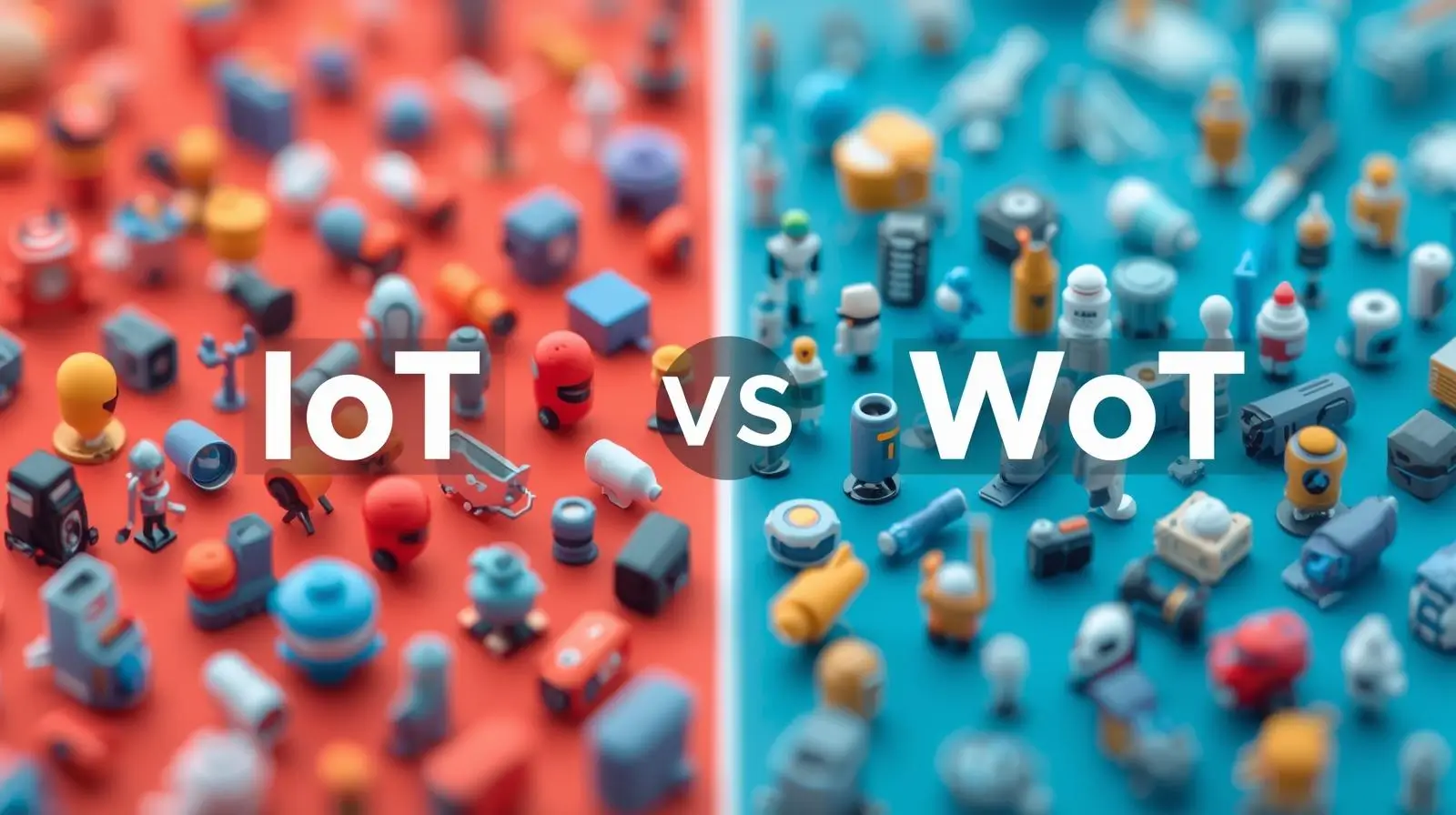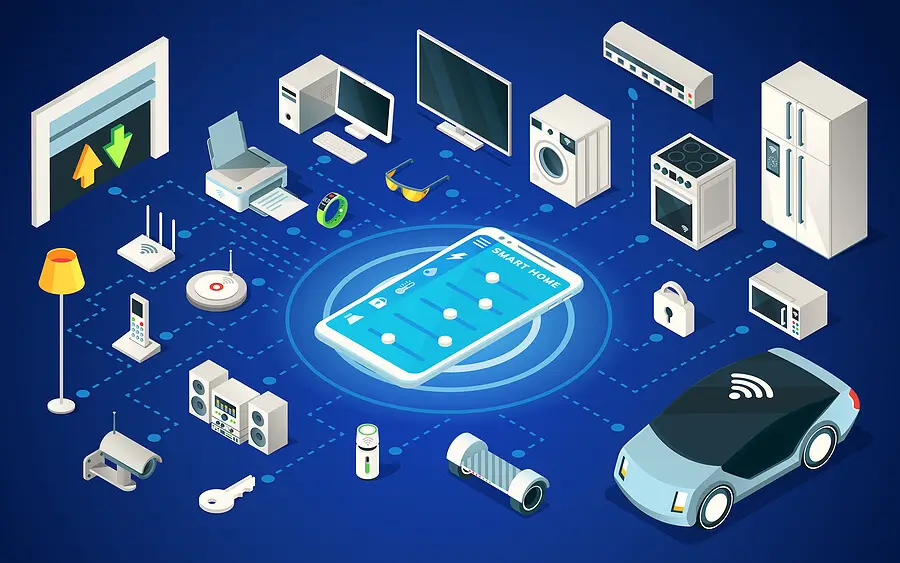Imagine the Internet of Things (IoT) as electricity finally reaching every house in a city. Lights, fans, fridges — everything now has power and can “talk” to the internet.
Great… but now every brand builds its own weird plug and socket. Philips lights only work with Philips plugs. Samsung fridges need Samsung sockets. You end up with 27 different adapters in your drawer.
The Web of Things (WoT) is the hero that says: “Let’s just agree on ONE universal plug (like USB-C for devices). Same shape, same language, works everywhere.”
That’s it. That’s the entire difference.
- IoT = “Let there be connection!”
- WoT = “Let the connections actually make sense and talk nicely to each other.”
What Exactly is the Web of Things? (The 2025 Simple Definition)
The Web of Things uses the same technologies that run the entire World Wide Web (HTTP, JSON, WebSockets, URLs, etc.) to make smart devices discoverable, understandable, and controllable — exactly like web pages.
In 2025 language: WoT turns every smart device into a mini website that any app or AI assistant can read and control without needing a PhD or 15 different apps.
The 4 Secret Ingredients of WoT (Now with Better Analogies)
-
Thing Description (TD) – The Device’s LinkedIn Profile + Owner’s Manual Combined
It’s a tiny JSON file (usually < 5 KB) that says everything a stranger needs to know:{ "name": "Living Room Lamp", "type": "Smart Light", "actions": ["turnOn", "turnOff", "setBrightness", "setColor"], "properties": ["isOn", "brightness", "color"], "events": ["motionDetected"], "url": "https://my-lamp.local/actions" }Real-life win in 2025: Buy a new WoT-certified bulb → phone scans it → reads the TD in 1 second → instantly added to Google Home, Apple Home, and your custom dashboard. Zero setup, zero accounts.
-
WoT Scripting API – The Universal Remote That Actually Works
Standard JavaScript any web app (or ChatGPT Plugins, Apple Shortcuts, Node-RED) can use:const lamp = await WoT.consume(thingDescription); await lamp.actions.turnOn(); await lamp.actions.setColor("#ff69b4"); // hot pink, because why notInsight: In 2025 people build entire home automations in 10 lines of JavaScript instead of fighting IFTTT, Zapier, or Home Assistant YAML.
-
Binding Templates – The Rosetta Stone for Protocols
Your lamp speaks Zigbee, door lock Z-Wave, car OBD-II over Bluetooth. Binding Templates are official W3C “translation dictionaries” so the same “turnOn” command works everywhere.
2025 reality: Matter/Thread promised this, but WoT is the only standard that actually works across Matter, Zigbee, BLE, and even old MQTT devices without ripping and replacing.
-
Security & Privacy – Built-in From Day One (Not Bolted On Later)
- OAuth 2.0 / DPoP for authentication
- Automatic TLS everywhere
- Fine-grained access control (“Guest Wi-Fi can only turn on the porch light”)
Pro tip: WoT security is so solid that hospitals and factories adopt it faster than smart-home brands.
Real 2025 Morning Routine (Tested by Me Last Week)
I press one button labeled “Good Morning” on my phone (a tiny web app I built in 2024):
- Blinds (IKEA, Zigbee) → open 70%
- Thermostat (Tado, Thread/Matter) → 22 °C
- Coffee machine (cheap AliExpress, Wi-Fi) → start espresso
- TV (LG webOS) → opens YouTube morning playlist
- Car (Tesla) → precondition to 20 °C and unlock
Total apps used: Zero proprietary ones.
Setup time: 4 minutes.
That’s WoT in 2025.
Why WoT Is Quietly Winning Right Now (2025 Update)
- Matter/Thread was supposed to fix everything… but it only covers lights, plugs, locks. WoT works for everything — robots, EVs, medical devices, industrial sensors.
- Major players already on board (quietly):
- Siemens & Bosch in factories
- Google & Mozilla in browsers
- Eclipse & OpenJS Foundations for tools
- Even Apple supports WoT Thing Descriptions in HomeKit (they just don’t brag)
- AI agents love it. Tell Grok/Claude/GPT “turn on the bedroom lights” → they fetch the TD and just do it. No plugins required.
The Challenges (Let’s Be Honest)
- Legacy devices: 2018 Hue lights won’t speak WoT natively → $15 WoT bridges fix it.
- Tiny sensors: A soil sensor that lasts 10 years on a coin cell doesn’t want a full web server → we keep Zigbee/MQTT + gateways.
- Corporate inertia: Some companies still love walled gardens (yes, Ring, we’re looking at you).
Quick Comparison Table (2025 Version)
| Feature | Classic IoT | Web of Things (WoT) |
|---|---|---|
| Discovery | Scan QR → install app | Visit URL or tap NFC |
| Control from phone | 17 different apps | One web dashboard or AI |
| Control from AI | Almost impossible | Native — just reads the TD |
| Works locally (no cloud) | Rarely | Yes, by design |
| Developer skills | Learn every SDK | HTML + JavaScript |
| Future-proof | New protocol → everything breaks | New protocol → add a binding |
Final Thought: The Web Won Once, It’s Winning Again
25 years ago the web crushed AOL, CompuServe, and closed networks because it was open, simple, and universal.
Today, WoT is doing exactly the same to the fragmented IoT world.
In 5 years, asking “Does this device support WoT?” will sound as silly as asking “Does this website support HTTP?”
Welcome to the actual future. It’s boringly simple — and that’s why it works.




